Cluster is a European mission dedicated to observing interactions between the Earth’s magnetosphere and the solar wind in three dimensions. A world first, the mission centres around four identical satellites flying in a pyramid formation.
Key information
| Mission | Study interactions between the solar wind and Earth’s magnetosphere in three dimensions |
|---|---|
| Domain | Science |
| Launch date | First launch 16 July 2000 |
| Partners | ESA, NASA |
| Where | Highly elliptical quasi-polar orbit (perigee: 19,000 km, apogee: 119,000 km) |
| Lifetime | Two years, extended to 31 December 2025 |
| Status | In operation |
Key figures
- 4 satellites in Cluster constellation
- 11 instruments on each satellite
- 1,200 kg: mass of each satellite
- 4 French laboratories contributing
Key milestones
- 2022: Mission extended to end 2025
- 2017: Mission extended to end 2022
- 19 November 2014: Mission extended to end 2016
- June 2009: Mission extended to end 2012
- 2005: Mission extended to June 2009
- 2004: Mission extended one year
- 9 August 2000: Launch of two more satellites by Soyuz-Fregat
- 16 July 2000: Launch of first two satellites by Soyuz-Fregat
- 4 June 1996: Satellites lost on failed Ariane 5 flight
- February 1983: Start of Cluster project
Project in brief
Since mid-2010, instruments on the Cluster mission’s four satellites—Rumba (C1), Salsa (C2), Samba (C3) and Tango (C4)—have been directed at Earth’s magnetic shield, detecting interactions with the solar wind that strikes it at a speed of 400 km/s. Typically spanning several hundred to several tens of thousands of kilometres, these interactions are the source of the magnetic storms that can damage telecommunications systems and even ground-based electrical power grids.
Each satellite in the Cluster mission is carrying an identical suite of 11 instruments, three of which were funded by CNES and developed and built by French research laboratories (IRAP, LPC2E, LPP and LESIA). This complex instrumentation makes it possible to distinguish spatial and temporal variations and to refine models of interactions between the different regions of Earth’s environment. Distances between the satellites vary from 600 to 20,000 kilometres, depending on which regions they’re crossing and their current science goals.
The initial Cluster mission got off to a bad start when its four satellites were lost on Ariane 5’s failed maiden flight in 1996. However, as the primary cornerstone—along with SOHO—of the European Space Agency’s (ESA) Horizon 2000 programme, it was extended and new flight models identical to the previous ones were constructed.
ESA has approved a final mission extension to end September 2024, when the C2 satellite will enter Earth’s atmosphere. ESOC will nevertheless continue to keep a check on the health of the satellites until they enter the atmosphere in 2024 (C2), 2025 (C1) and 2026 (C3 and C4).
CNES’s role
CNES is in charge of managing developments for the contracting authorities.
The agency establishes and manages agreements with the French laboratories rebuilding the instruments, developing data processing software (telemetry decommutation and scientific exploitation) and defining operations. It funded three of the instruments on the Cluster satellites.
CNES developed, set up and has operated the French Cluster Centre (CFC) throughout the mission..
Contacts
Sun, Heliosphere and Magnetospheres (SHM) subject matter expert
Kader Amsif
E-mail: kader.amsif at cnes.fr


